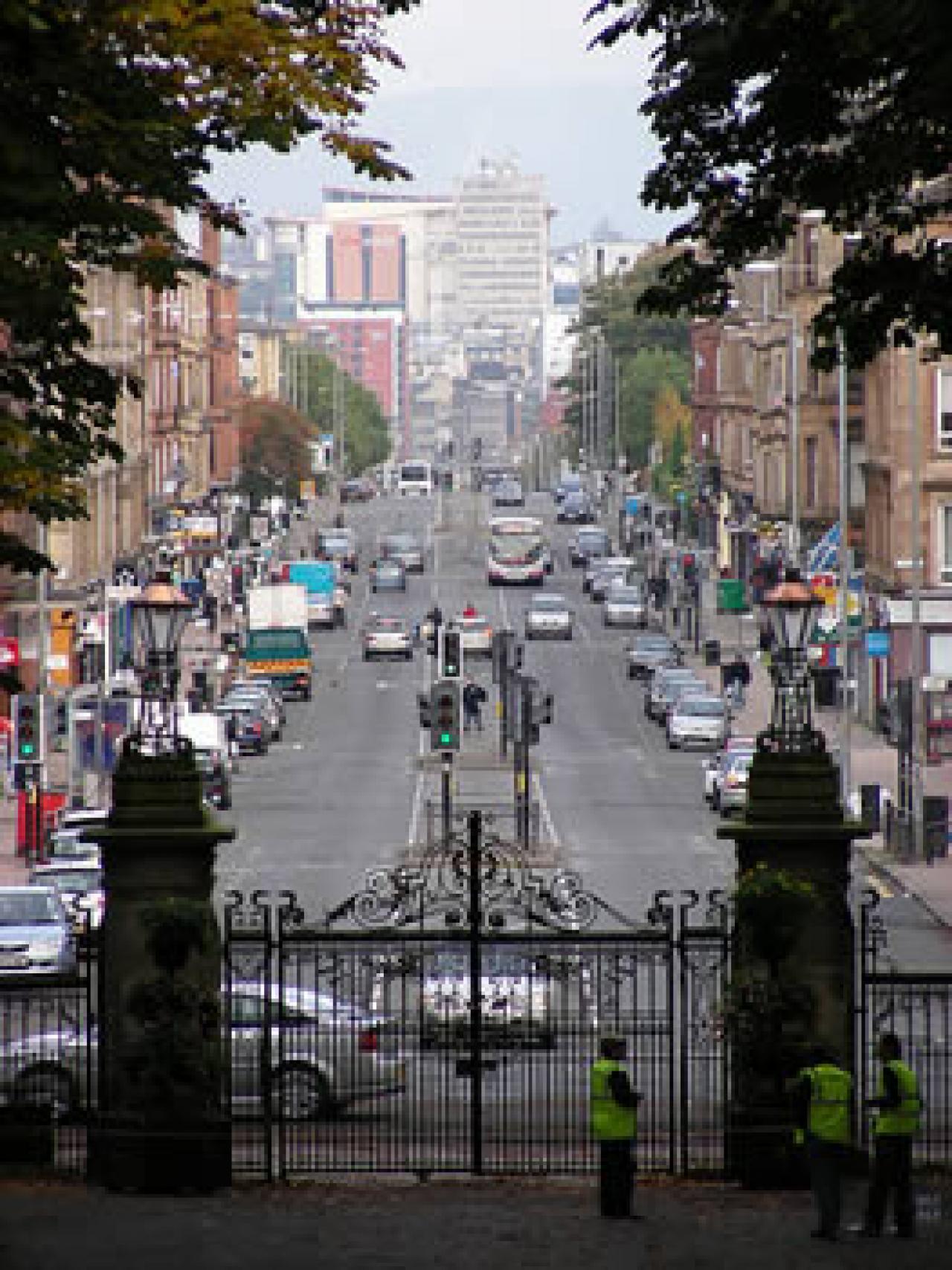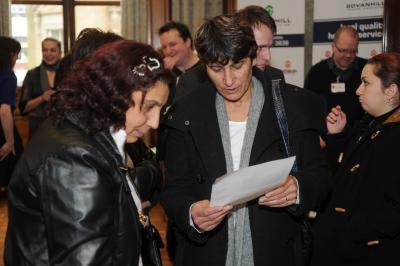
By Marie McLelland - Glasgow Project Co-ordinator
URBinclusion is challenging Glasgow in a new way. It is giving us the space to explore how we implement existing plans and strategies and how we overcome the challenges we face. While this is something we may have done for some time, we now need to articulate, measure and monitor how we do it.
Glasgow is not new to URBACT. Whether it be Roma Net, My Generation at Work or Resilient Europe, URBACT has been the foundation of many initiatives and methodologies we have used to take forward new ideas within urban planning and economic and social inclusion.
URBinclusion however is challenging Glasgow in a new way. It is giving us the space to explore how we implement existing plans and strategies and how we overcome the challenges we face. While this is something we may have done for some time, we now need to articulate, measure and monitor how we do it.
URBinclusion arrived at a perfect time for Glasgow. Since 2003, Community Planning Partnerships (CPP’s) were the vehicle for local communities, stakeholders and public services to deliver positive change on a local level. At a Scottish level, the Community Empowerment Act (2015) made some changes to the way that municipalities delivered community planning and enshrined greater community involvement and decision making in these structures. The Act required Cities to develop targeted support in identified neighbourhoods with each area developing its own locality plan.
Govanhill
Nine areas of the city were identified as a priority under Glasgow’s ‘Thriving Places’ commitment. This ten years commitment intends to combat inequality and poverty in areas that have consistent levels of inequality in comparison to other neighbourhoods, especially in relation to child poverty, health indicators and levels of unemployment. While not one of the nine Thriving Places, Govanhill was granted special status as a 10th neighbourhood due to the complex and diverse range of challenges there. Each area created a Local Plan, with Govanhill’s 10 year strategy being “A Better Govanhill”.
There have been many reports, articles and academic papers written about Govanhill. It is Scotland’s most ethnically diverse community and also one of the most densely populated. It has been the first point of settlement for many arriving in the city, often described as ‘Glasgow’s Ellis Island’ and hosts the largest Roma community in Scotland, with an estimated 3,500 predominantly Romanian and Slovakian Roma calling it home.
The Scottish indigenous population in Govanhill are a mix of working class Scots who have lived in that area of the city for many years and in recent years a growing number of bohemian artists, students and social entrepreneurs who are attracted by cheap rental possibilities and easy access to the city centre. Govanhill is a youthful population and is becoming more so as there are many young children and families living in the area.
Family poverty is evident, but not fully quantified by available data. However, we know that child poverty level is above the national average and income poverty is evident, with resulting challenges for poor health, educational outcomes and the prevalence for crime and anti-social behaviours.
Govanhill was one of the few inner city areas to survive the policy of demolition and replacement with new buildings during the 1960s. A different approach included the establishment of a community-based Housing Association – Govanhill Housing Association – in 1974, run by residents. As an alternative to mass demolition, there was a steady programme of refurbishment of traditional tenement properties complemented by new built developments.
Govanhill has a distinctive collection of shops, including clothing, fresh food stores of many types, traditional shops, and an incredibly varied range of eating places and businesses supporting international connections. The area has a thriving, and growing, creative arts community and a vibrant voluntary and faith-based sector where over 50 organisations are actively providing support services related to the environment, youth and inter-generational, promoting integration, tackling addictions, and a range of arts, education and leisure opportunities.
URBinclusion as a Tool to Address Challenges
As mentioned, URBinclusion has arrived at a critical time for Glasgow, and especially Govanhill. This is a neighbourhood on which we have historically focussed much attention, but unlike other areas of the city, it has not seen the benefits of inclusive growth, a key priority for Glasgow’s Economic Strategy.
So what do we do? Well we need to change the way we engage with and develop local priorities. One of the mandatory challenges we have been asked to address is maintaining the involvement of local stakeholders in the planning, delivery and decision-making processes. This fits well with the Scottish Governments priorities for community empowerment but also helps us focus on how we empower the Govanhill community to take part in decision-making structures and improve their capacity to do so.
When the Glasgow team visited our URBinclusion partner City Copenhagen, we were captivated but the ‘Sydhavnen Spirit’, and how the community had come together to re-brand and transform the perception of the local area. We wondered how we could take this back to Glasgow and help promote this idea locally in Govanhill.
Significant good work is being done in Govanhill by many public, private and third sector organisations, but it needs to be more cohesive and inclusive. We lack the bigger picture or map of how stakeholders interrelate and unfortunately, lack of communication generates rumours and negative perceptions among key stakeholders, instead of a sense of common purpose or ‘sprit’.
Through our Operational Implementation Framework (OIF) we hope to address this challenge.
One of our key actions is to build a more common purpose and joined up vision to create ‘A Better Govanhill’ with organisations fostering a better understanding of each other’s work, create connections and support a more participatory monitoring structure for the area.
In the first half of 2018, we intend to host a market place information sharing event, which will bring public, private and non-governmental organisations together to share information on the services they provide, create a services map for the area, discuss and agree a common purpose and vision for Govanhill and agree a more participatory structure for monitoring the Local Plan.
This participatory approach will not only help us address one of the mandatory challenges of the Implementation Networks, but it will greatly help us to tackle issues of engagement in the Govanhill Locality, that have historically been one of the biggest challenges for us to overcome. Methods we have used in other areas of the city have simply not worked and we need to adopt new ways of working.
URBinclusion, like all other URBACT projects, gives us an opportunity to focus, look at new ways of working and learn from other cities. We are hoping that the methods we use for our OIF can be transferred across the other nine Thriving Places in Glasgow and leave a more sustainable and participatory legacy.
